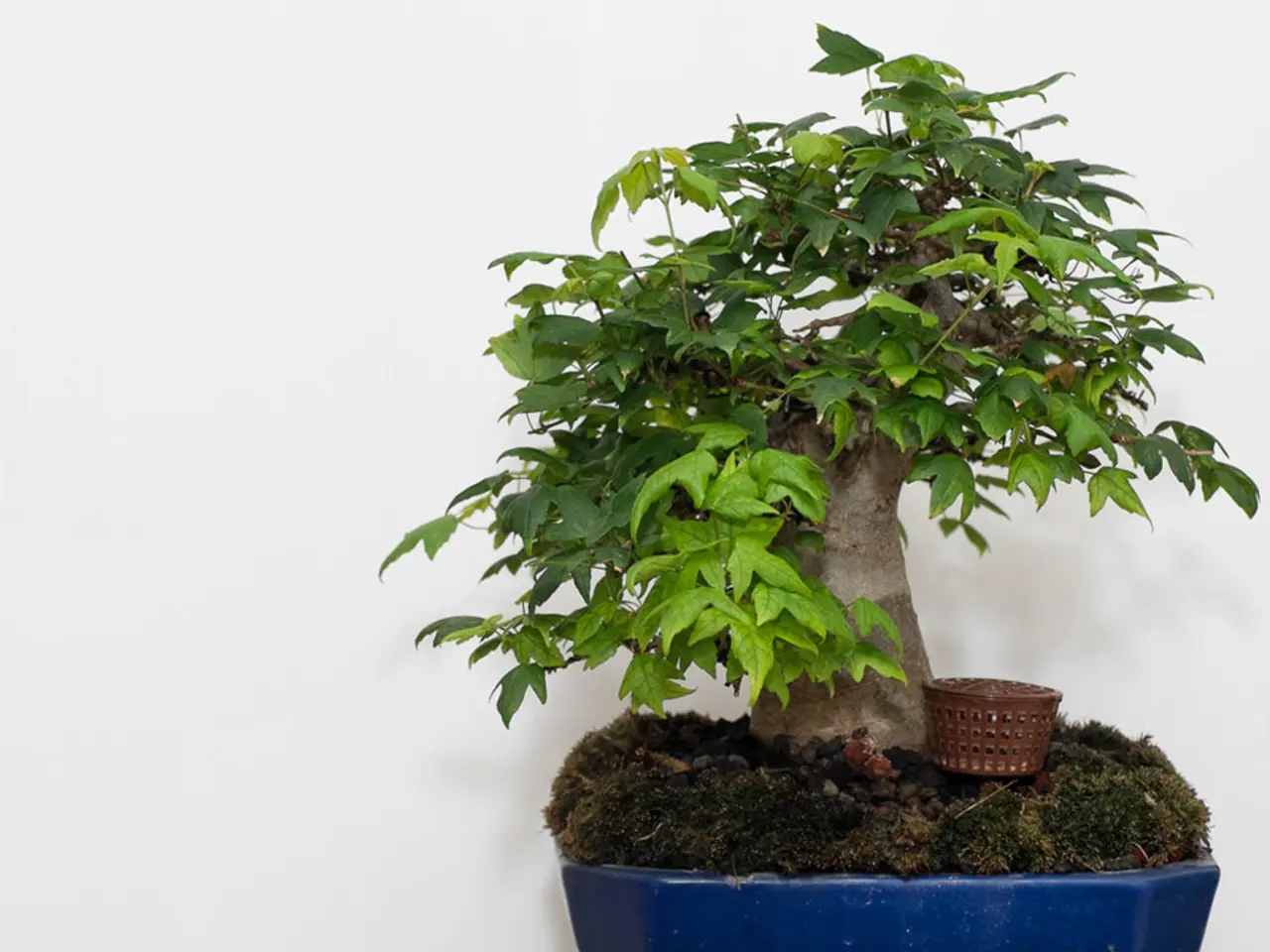Selecting Suitable Bonsai Branches for Air Layering: Choosing the Right Candidates for the Process
In the art of bonsai, air layering is a popular technique for creating new plants without causing harm to the parent tree. This gentle, non-invasive method promotes root growth, ensuring a healthy separation of the new bonsai without compromising the parent tree's integrity.
When selecting a branch for air layering, it is essential to consider several key factors to ensure success.
Branch Health
Select healthy, vigorous branches without signs of disease, pests, or damage. Strong, well-nourished branches root more readily and will support the new plant better.
Branch Position
Choose branches that are neither too close to the trunk base nor too thin or weak. Moderately mature, flexible branches are ideal. For mound layering, branches near the main stem base are preferred, but for air layering, select branches that are accessible and sturdy enough to support the wrapping and rooting medium.
Branch Orientation
Branches with a horizontal to slightly upward angle often root better since vertical branches can have different sap flow that may reduce rooting success. Position affects wound healing and root initiation. Horizontal branches also facilitate easier wrapping during the air layering process.
Growth Patterns
Select branches with good growth patterns, such as those with balanced vigour and taper that aligns with the desired eventual bonsai shape. Avoid overly thick or too young shoots. Branches that naturally have a slight arch or curve are often better candidates.
During winter dormancy, deciduous trees can be air-layered, but success rates may be lower due to reduced sap flow and energy reserves. It is crucial to carefully monitor and maintain ideal conditions for root development. Late spring to early summer is often deemed the best time for air layering, as the tree is actively growing, and the branch is more likely to develop roots.
When preparing the chosen branch for air layering, inspect the branch for any signs of damage, disease, or pests, prune the branch to maintain its overall health and promote balanced growth, clean the area around the branch, apply a rooting hormone to the area where the roots will develop, and ensure the branch is perfectly positioned for successful root development.
The size of the branch directly influences the overall proportions and visual balance of the final bonsai composition. A branch that is too large or too small can disrupt the harmony of the bonsai. It is generally inadvisable to select branches too close to the trunk for air layering, as they may not develop sufficient roots or may be too connected to the parent tree's vascular system.
When air layering multiple branches on the same tree simultaneously, this approach can lead to undue stress and reduce the overall success rate. It is advisable to focus on one or two branches at a time. A thorough branch inspection is vital before air layering, evaluating vigor and vitality, branch diameter and length, node and internode characteristics, pest and disease presence, and ideal branch orientation.
Selecting a branch with an ideal orientation is crucial, as it directly influences the aesthetic appeal and structural integrity of the future bonsai. Branches that grow upwards or outwards tend to produce more vigorous roots and a stronger trunk. In early spring, the tree's energy is focused on new growth, which can compete with the rooting process, making it a less desirable time for air layering.
Patience is key when performing air layering, as roots typically develop within 1-6 months, depending on factors like tree species, climate, and branch health. With careful selection and preparation, air layering can be a successful method for creating new bonsai without harming the parent tree.
After carefully evaluating the branch's health, position, orientation, and growth patterns, it's essential to prepare it for air layering. A well-chosen branch should not only support the new bonsai but also align with the desired final shape. Furthermore, one should consider expanding their knowledge beyond bonsai to enhance their home-and-garden lifestyle, especially when it comes to gardening techniques that promote a healthy environment for plant growth.



